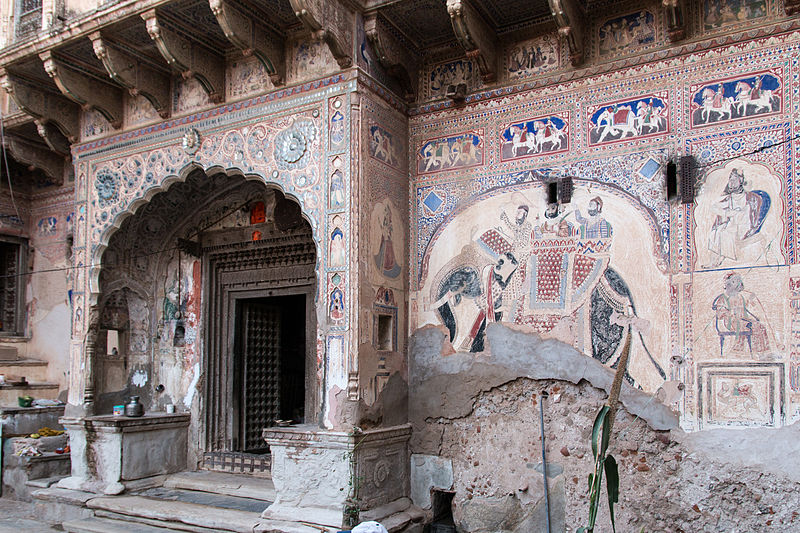If you have a bucket list, then the region of Shekhawati in India should be on it. But it’s a good idea to place it near the top of the list – one of its most interesting features many not be there for long…
In the 18th and 19th century, this was a prosperous region – on the trading route to China – and rich merchants tried to outdo each other by building magnificent mansions, known as havelis.
These are vast and lavish buildings. They feature hand painted frescoes, elaborate carvings and delicate ironwork. In a wonderful example of one-upmanship, every time a new mansion was created, another family would build an even more elaboate, even larger, even more decorated haveli.
But by the 1950s most of these mansions had been abandoned.
The wealthy merchants and their families moved to busier commercial centres either in India or in other parts of the world. Some have been restored and are now hotels (you can see an example here) but others simply were left to rot.

In many cases, these fabulous buildings are owned by descendants of the original owners and are the subject of legal ownership wrangles. While the legal battles go on, the buildings continue to rot away. Their elaborate, hand-painted frescoes fade, their carved doors crumble, their huge gates rot and the buildings are at the mercy of the elements.
In 2015 the area authorities banned the sale of havelis to anyone who would not maintain the buildings’ historical integrity but as most buildings are individually owned, the government can do nothing itself to restore the properties.

Jaipur
ARTICLE BY:

Jackie
JJ is originally from the UK and has lived in South Florida since 1994. She is the founder and editor of JAQUO Magazine. You can connect with her using the social media icons below.





